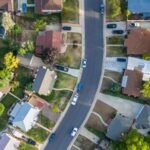Managing a multi-unit residential building can be a daunting task for property managers. With a range of responsibilities, such as keeping tenants satisfied, responding to repair requests, and overseeing upgrades, finding efficient ways to manage property upkeep is crucial.
Streamlining these processes reduces costs and improves the living experience for tenants. While many property managers turn to contractors for various repairs and updates, it’s equally important to think about long-term solutions that support operational efficiency.
From optimizing communication to leveraging technology, each step towards a streamlined system makes a significant difference.
Here’s how you can get started:
Create a Preventative Maintenance Plan
Preventative maintenance is the foundation of a successful property management strategy. Setting up regular inspections for plumbing, HVAC systems, and electrical wiring helps identify issues before they become major problems.
Create a calendar outlining the tasks required throughout the year, like checking air conditioning units in spring, inspecting heating systems in fall, and testing water heaters periodically. By scheduling these checks in advance, property managers can avoid costly repairs and emergency calls, ensuring tenants’ needs are promptly met.
A solid plan also enables property managers to allocate the right resources and time for each task, minimizing disruptions.
Partner with Experts for Specialized Needs
When managing multiple units, turning to a dedicated service provider can save time and improve the overall quality of repairs and upgrades.
For tasks like large-scale remodeling or significant structural updates, property managers should rely on those with specialized knowledge of multi-family commercial remodeling. Working with multi-family home commercial contractors can prioritize efficiency and tenant comfort.
They can also offer insight into optimal designs, upgrades, and materials for multi-unit buildings. Collaborating with such professionals can help property managers maintain a competitive advantage and keep operations running smoothly without the burden of overseeing every detail.
Use Technology to Track Requests and Scheduling
Property managers who utilize technology to streamline maintenance activities can ensure smooth operations. Implementing property management software helps both tenants and management teams.
Tenants can submit maintenance requests directly through online portals, while managers can track each request, schedule repairs, and order supplies. This system minimizes errors and improves the response time for each request.
Also, using such software can help identify recurring issues, making it easier to address underlying problems proactively rather than just fixing the symptoms. Efficient scheduling tools allow property managers to plan and prioritize tasks based on urgency, ensuring a quicker turnaround on each job.
Train Your Maintenance Team
A well-prepared maintenance staff can help reduce downtime and ensure high tenant satisfaction. Regular training on the latest tools, safety procedures, and building systems can empower the team to handle more tasks independently.
This helps avoid unnecessary delays, especially when dealing with routine issues such as plumbing leaks or electrical malfunctions. With ongoing education, maintenance staff members can become proficient in recognizing signs of potential problems, allowing them to address issues before they escalate.
Property managers should also ensure that team members are equipped with up-to-date knowledge about building codes and regulations to avoid compliance issues.
Optimize Vendor Relationships
Building strong relationships with reliable vendors can have long-lasting benefits. When you work with trusted vendors, you can often get quicker response times, better prices, and higher-quality service. Consider establishing a list of preferred suppliers and service providers who understand the unique needs of a multi-unit building.
A good relationship may also lead to discounts or priority scheduling, especially during peak seasons when repairs or updates are more frequent. Whether it’s a trusted supplier for parts or a contractor skilled in specific tasks, working with familiar partners can streamline maintenance workflows and reduce time spent sourcing new services for each task.
Establish Clear Communication Channels with Tenants
Clear and consistent communication with tenants is essential for maintaining smooth operations. Property managers should make it easy for tenants to report issues and inquire about maintenance schedules.
Setting up an online portal where tenants can submit maintenance requests, track progress, and find answers to common questions ensures that communication flows smoothly. Tenants appreciate being kept in the loop, so it’s essential to notify them about upcoming repairs or any scheduled maintenance.
When tenants feel informed, they are less likely to become frustrated with delays and will be more understanding of temporary disruptions.
Focus on High-Traffic Areas
Maintaining high-traffic areas is crucial to tenant satisfaction and preserving the building’s overall appearance. Hallways, stairwells, laundry rooms, and parking lots are places that experience the most wear and tear. Regular cleaning and upkeep in these areas can make a big difference in how tenants and visitors perceive the property.
Installing durable materials such as high-grade flooring and resilient paints can reduce the frequency of repairs and make these areas easier to clean. Property managers focus on these high-use areas to ensure tenants have a positive experience each time they enter shared spaces.
Prioritize Sustainability in Maintenance
Sustainability isn’t just a trend. It’s a practical way to reduce long-term operational costs and improve the property’s environmental impact. Incorporating energy-efficient systems and eco-friendly materials into maintenance practices can significantly save utilities over time.
For instance, replacing traditional lighting with LED lights, installing low-flow plumbing fixtures, or choosing sustainable flooring options can reduce water and energy consumption. When property managers prioritize sustainability in their approach, they’re lowering costs and appealing to eco-conscious tenants who appreciate efforts toward environmental responsibility.
In addition to these sustainable practices, property managers can also use services like Utility Bidder to compare energy providers and secure the most cost-effective, eco-friendly energy plans, further enhancing their commitment to sustainability while reducing operational expenses.
Plan for Unexpected Emergencies
Even with the best planning, emergencies are inevitable. When dealing with multiple units, emergencies such as plumbing leaks, electrical issues, or even weather-related damage can arise at any time.
Property managers should have contingency plans in place to deal with these issues quickly and effectively. This includes having a list of reliable emergency service providers and setting up emergency funds for unforeseen repairs.
A well-prepared overseer can quickly address urgent matters, preventing extensive damage and ensuring tenants are safe and comfortable during stressful situations.
Streamlining the management of multi-unit properties requires a balanced approach that includes careful planning, effective communication, and proactive maintenance. Property managers can reduce the burden of daily upkeep by creating a structured plan, leveraging technology, and collaborating with trusted vendors.
Focusing on high-traffic areas, sustainability, and tenant communication will ensure that the property stays in top condition while improving the living experience for tenants. Regularly reviewing strategies and remaining flexible to changes ensures that property management remains efficient, cost-effective, and adaptable for the future. In the long run, these efforts lead to a more organized and satisfying environment for everyone involved.










